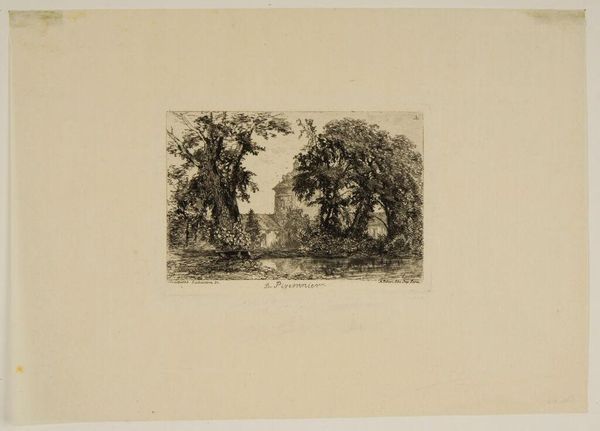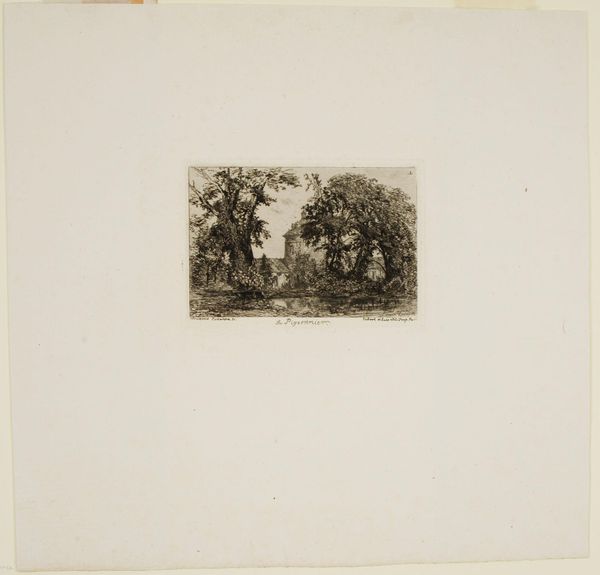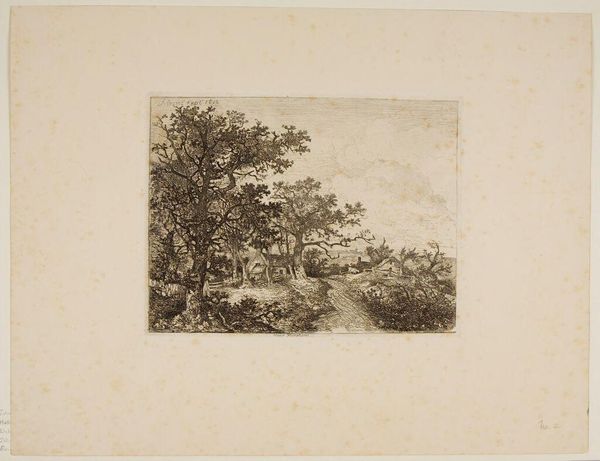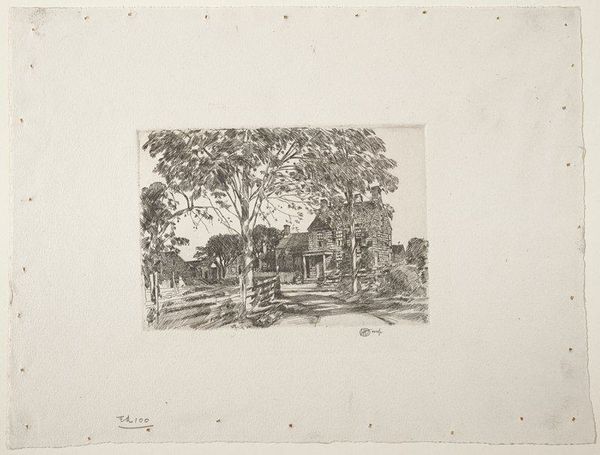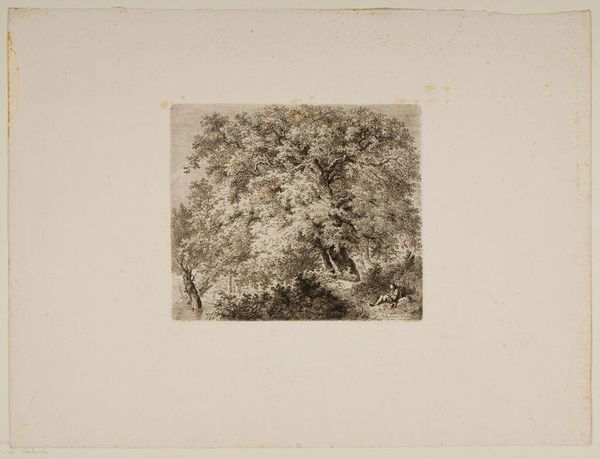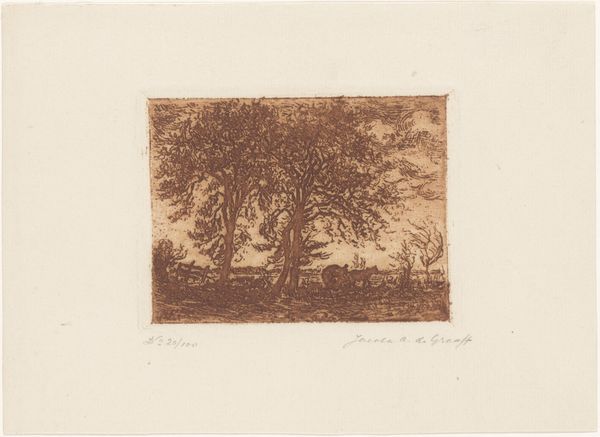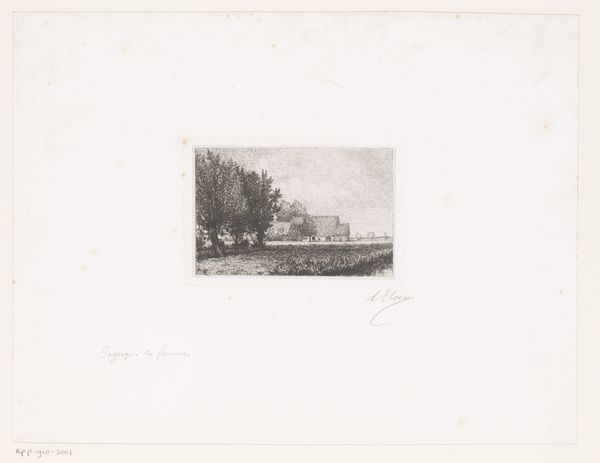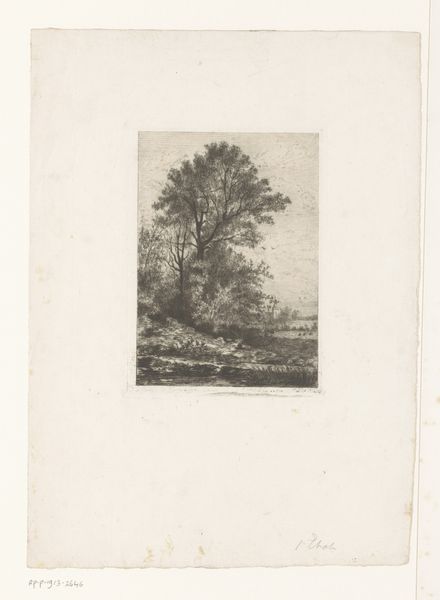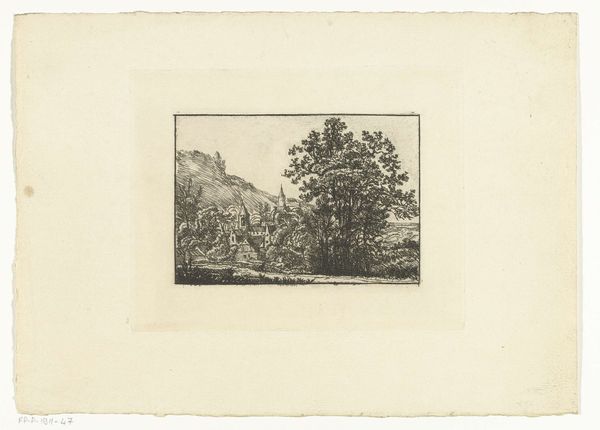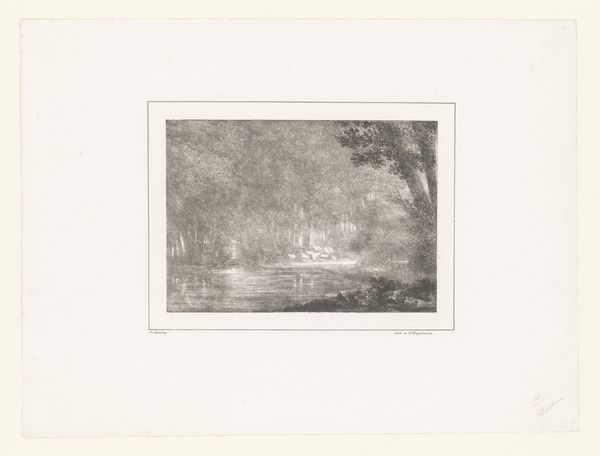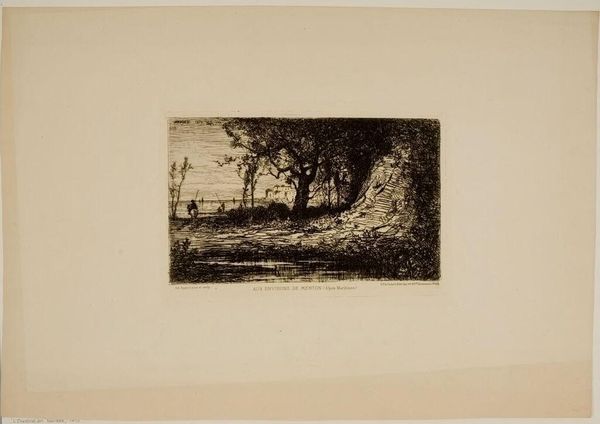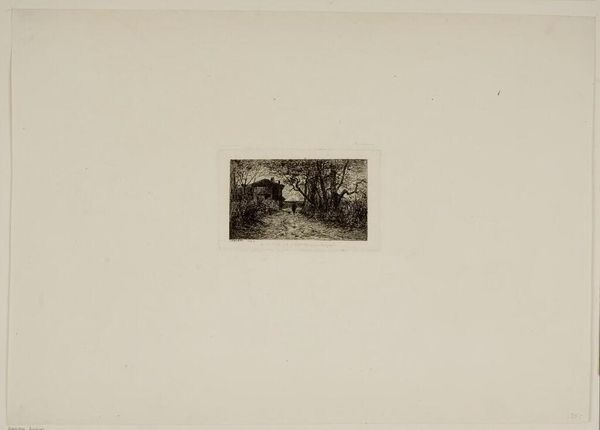
Dimensions: 5 7/16 x 7 9/16 in. (13.81 x 19.21 cm) (plate)9 3/16 x 10 9/16 in. (23.34 x 26.83 cm) (sheet)
Copyright: No Copyright - United States
Editor: Right, next up we have Childe Hassam’s “Three Hickories,” an etching from 1917. It feels incredibly still and peaceful. All those carefully etched lines create this remarkable sense of quiet observation. How do you connect with this work? Curator: Funny you should say "quiet observation," because that's exactly what strikes me too. Hassam's known for his plein-air impressionism, but there's a stillness here that’s almost meditative. He’s captured a fleeting moment in nature, yes, but with this deliberate, almost geometric layering. Makes me wonder, what do you make of that lone figure? Are they integral or incidental? Editor: Hmmm, incidental, I think. Like he's just part of the landscape. The focus, for me, is on the texture and the light filtering through the trees. The human form almost disappears! Curator: That’s a solid point! The figure blends into the scenery. To me it reads that Hassam uses that human element to emphasize the sheer, tranquil immensity of the natural world. Don't you feel dwarfed? He’s using geometry of lines to create an experience. Have you noticed how your eye keeps bouncing between the leaves, the river in the background, and then back again to that person, nestled, shadowed within nature? The etching almost becomes about *being* still within all the complexity of nature itself. Editor: Yeah, it’s less about the person and more about that *feeling* of being there. Now I get it, that tranquil feeling. So much more than just pretty trees! Curator: Exactly. Art isn't just *seeing*, but feeling, sensing. Editor: Makes you want to grab a blanket and go find your own trio of trees. Thanks, I’m looking at the trees quite differently now. Curator: My pleasure. Always a fresh perspective, isn't it?
Comments
No comments
Be the first to comment and join the conversation on the ultimate creative platform.
